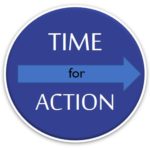
Background
 In 1992, the Delaware business community, education system, and the legislature committed to a standards-based education process in our public school system. They championed the need for high standards for science, math, language arts, and social studies. Recognizing that educational reform is generational, the corporate community decided to stay involved for the long haul.
In 1992, the Delaware business community, education system, and the legislature committed to a standards-based education process in our public school system. They championed the need for high standards for science, math, language arts, and social studies. Recognizing that educational reform is generational, the corporate community decided to stay involved for the long haul.
The Delaware Foundation for Science and Mathematics Education (DFSME) grew from this commitment. Formed in 1995, DFSME has orchestrated effective systemic reform in science and math education in Delaware’s public schools. DFSME first focused on science reform, serving as fiscal agent for a $6MM National Science Foundation (NSF) grant piloting Smithsonian LASER (Leadership and Assistance for Science Education Reform). The curriculum, which became known as Smithsonian Science, was adopted by all the state’s districts.
In the mid-2000s, DFSME continued supporting science, particularly the updating of units to include new discoveries and incorporate new technology and methodologies. But DFSME also began to turn its attention to math, identifying and piloting an international math program and supporting several math initiatives throughout the state.
At the same time, the nation was growing aware of the increasing importance of technology and engineering to remain competitive on the world stage. While its definition of science always included these topics, DFSME expanded its embrace to include the specific activities that, for the last decade, have been referred to as “STEM”—science, technology, engineering, and mathematics. DFSME has since worked to raise awareness of the broad variety of STEM fields, STEM education, and STEM careers.
Turning commitment into action
DFSME exists to bring together thought leaders and actors in business, K-12  education, higher education, and state and local government. Our common focus on ensuring educational success for every student in Delaware informs this collaboration, bringing together the many working parts needed to have a measurable impact on improving science and math education in the state. This interaction provides crucial input on which programs will have maximum impact and has led to numerous successes.
education, higher education, and state and local government. Our common focus on ensuring educational success for every student in Delaware informs this collaboration, bringing together the many working parts needed to have a measurable impact on improving science and math education in the state. This interaction provides crucial input on which programs will have maximum impact and has led to numerous successes.

